8 Yoga Asanas to Reduce Hair Fall Naturally
Reduce Hair Fall is a Challenge for Many, Here are breifly described 8 Yoga Asanas to Reduce Hair Fall Naturally
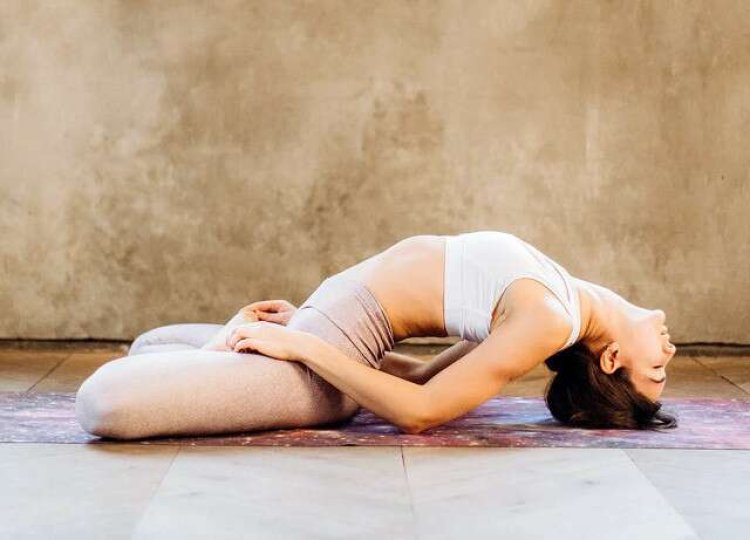
How to Reduce Hair Fall is a Challenge for Many, Here are
In the past two decades, hair loss was associated with a midlife crisis. Regardless of gender, hair loss has been recognized as a signal to prepare for retirement. In contrast to today, hair loss was not a problem until the age of 40 in previous generations.
Nonetheless, the age at which individuals began to experience hair loss has decreased dramatically due to the escalating levels of daily stress, deteriorating food quality, and hazardous lifestyle habits such as smoking, in addition to genetic disorders.
There are, however, measures you can take to substantially reduce or even stop hair loss. Two of them are yoga asanas and pranayama. Numerous practitioners have reported that consistent and diligent application of these two practices has promoted hair growth.
All forward-bending asanas increase blood flow to the cranium as well as circulation in general. This contributes to the maintenance of a clean cranium and healthy hair. The asanas listed below can assist with that. For optimal results, regular practice of these is recommended.
Yoga Asanas to Reduce Hair Fall Naturally
1.Adho Mukho Savasana (Downward Dog Pose)
2. Utthanasana (Standing Forward Pose)
3. Pavanmukthasana (Wind-relieving Pose)
4. Sarvangasana (Shoulder Stand)
5. Vajrasana (Diamond Pose)
6. Kapalbhati Pranayama (breath of fire)
7. Bhastrika Pranayama (Bellows breath)
8.Nadi Shodhan Pranayama (Alternate Nostril Breathing)
B
In Breif: 8 Yoga Asanas to Reduce Hair Fall Naturally:
1. Adho Mukho Savasana (Downward Dog Pose)
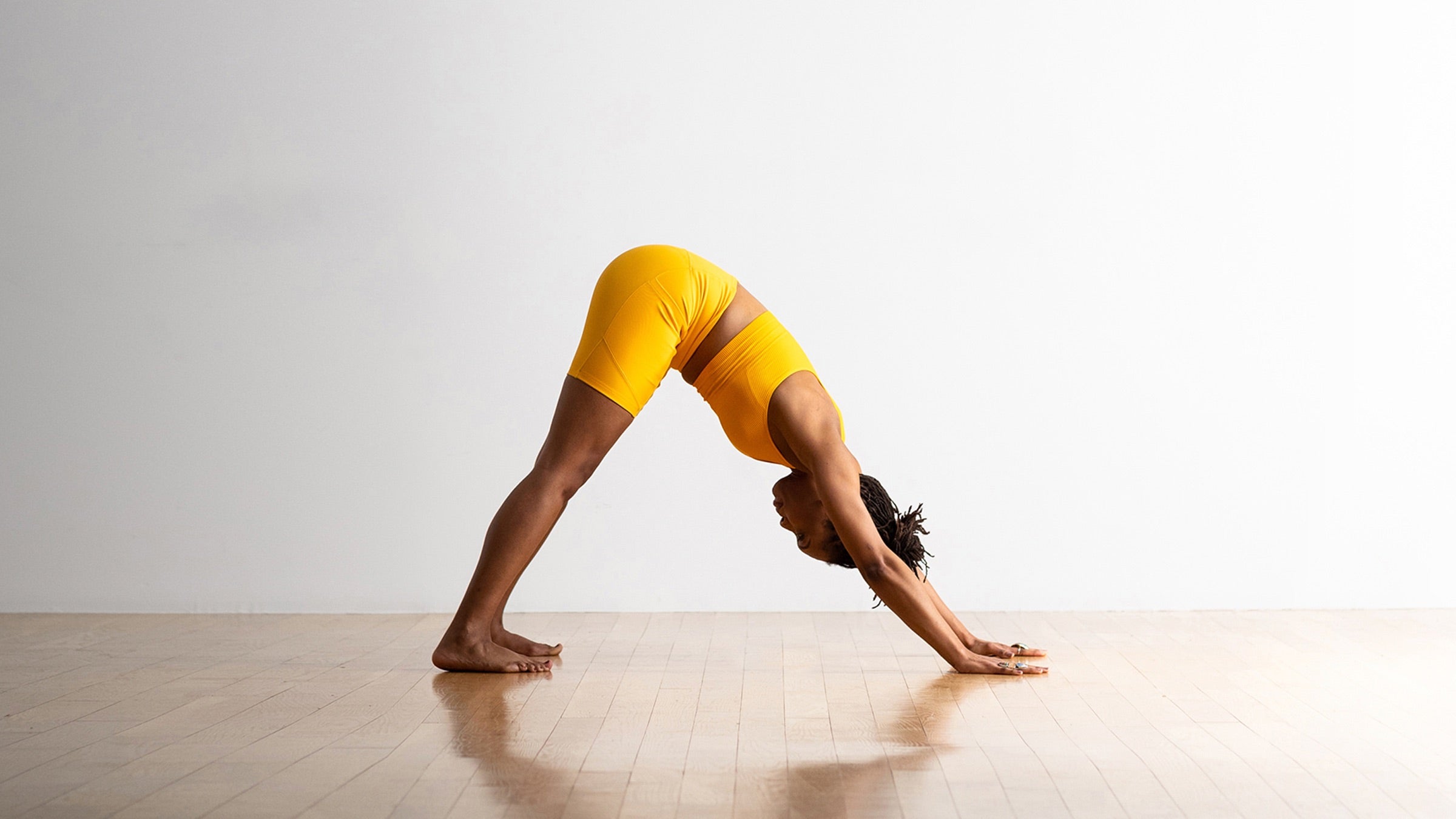
Start in a straight dog position with all four limbs. Elbows and legs should be in an upright position. Now, press the hips out and draw the stomach in so that the body forms an inverted 'V' shape. The legs should be hip-width apart, and the palms should be shoulder-width apart. Extend the neck and place your forearms on the ground. Maintain this position for several moments.
This asana increases the blood flow to the cranium. It is also effective against the common cold because it stimulates the sinuses. Additionally, it can help with insomnia, depression, and mental fatigue.
2. Utthanasana (Standing Forward Pose)

Stand with hands above head or in Tadasana (Mountain Pose). The spine should be straight with the feet a few inches apart. Inhale and lengthen the spine. Exhale, hinge the hips and bend forward upper body to move the hands towards the floor. Knees can be slightly bent to avoid any strain on the legs and lower back. Bring the fingertips down to touch the floor, if possible. The effort should be to put the body weight on the balls of the feet. Remain in this position for a few breaths and then relax.
his asana is useful in reducing tiredness and fatigue.
3. Pavanmukthasana (Wind-relieving Pose)

Straighten your spine out on the ground. Inhale, then bring the right knee to the chest and grasp it with your palms. Exhaling, bring the cranium toward the right leg. Hold this position for a few seconds while gently inhaling and exhaling. Inhale deeply and tilt the head back. Place the right leg back on the floor while exhaling. Repeat this procedure with the left leg, followed by both legs.
This asana facilitates digestion by releasing toxic gases confined in the intestines.
4. Sarvangasana (Shoulder Stand)
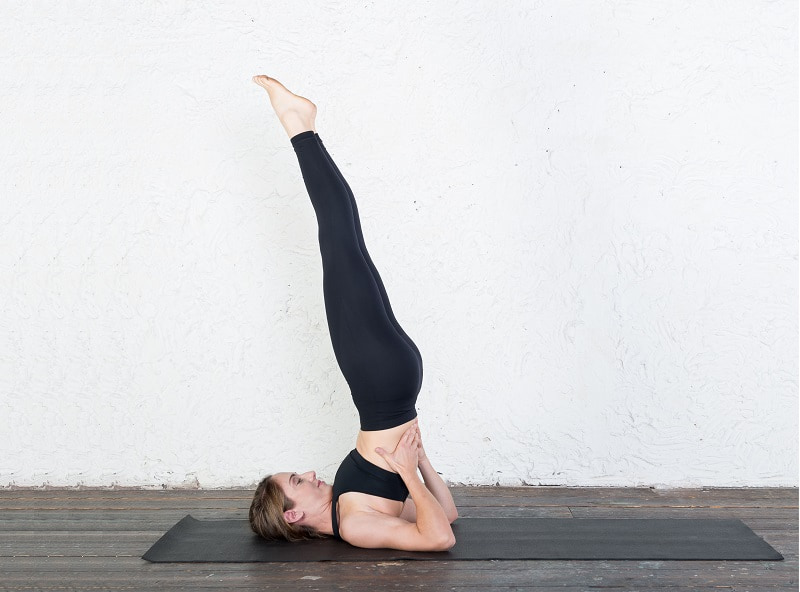
Straighten your spine out on the ground. Pull both legs upwards to gently elevate the lower body. Keep both forearms firmly held against the lower back and hip region, as if supporting the spine. Now, with the assistance and support of your palms, pull your legs while concurrently pushing your lower back upwards. Shoulders and wrists support the entirety of the body's weight. Allow the back to descend steadily with the aid of the hands, followed by the lowering of the thighs.
Allowing the body to tumble may result in a jerk and/or back discomfort. Those who struggle with this can perform Setubandhasana (Bridge Pose).
After leaving the asana, lightly massage your scalp to stimulate the hair follicles and take advantage of the increased blood flow. This asana promotes the health of the nervous system, genitalia, and lungs, and revitalizes the thyroid gland. Additionally, it increases the blood flow to the brain.
5. Vajrasana (Diamond Pose)
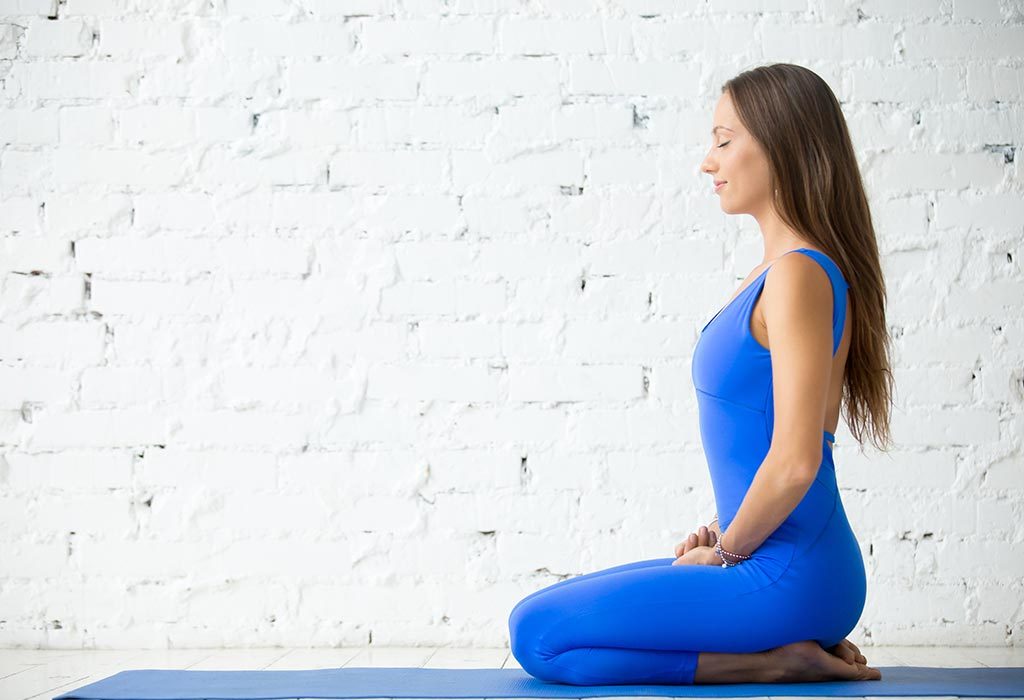
This posture, unlike others, can be performed promptly after consuming. Just bow your knees and sit on your posterior. The sides of soles should be as near together as feasible. The back and vertebrae must be erect. Take a constant cadence of deep breathes. Maintain this position for 2 to 8 minutes.
This asana aids in the reduction of gastric flatulence, digestion, weight loss, and urinary disorders.
Pranayama beneficial for Healthy Hair
The majority of people with hair loss have complained that tension is a major factor in their hair thinning severely. In addition to yoga, pranayama has been shown to be the most effective anti-stress technique. Moreover, not only is it an effective method for promoting hair growth, but it also improves your overall health.
6. Kapalbhati (breath of fire)
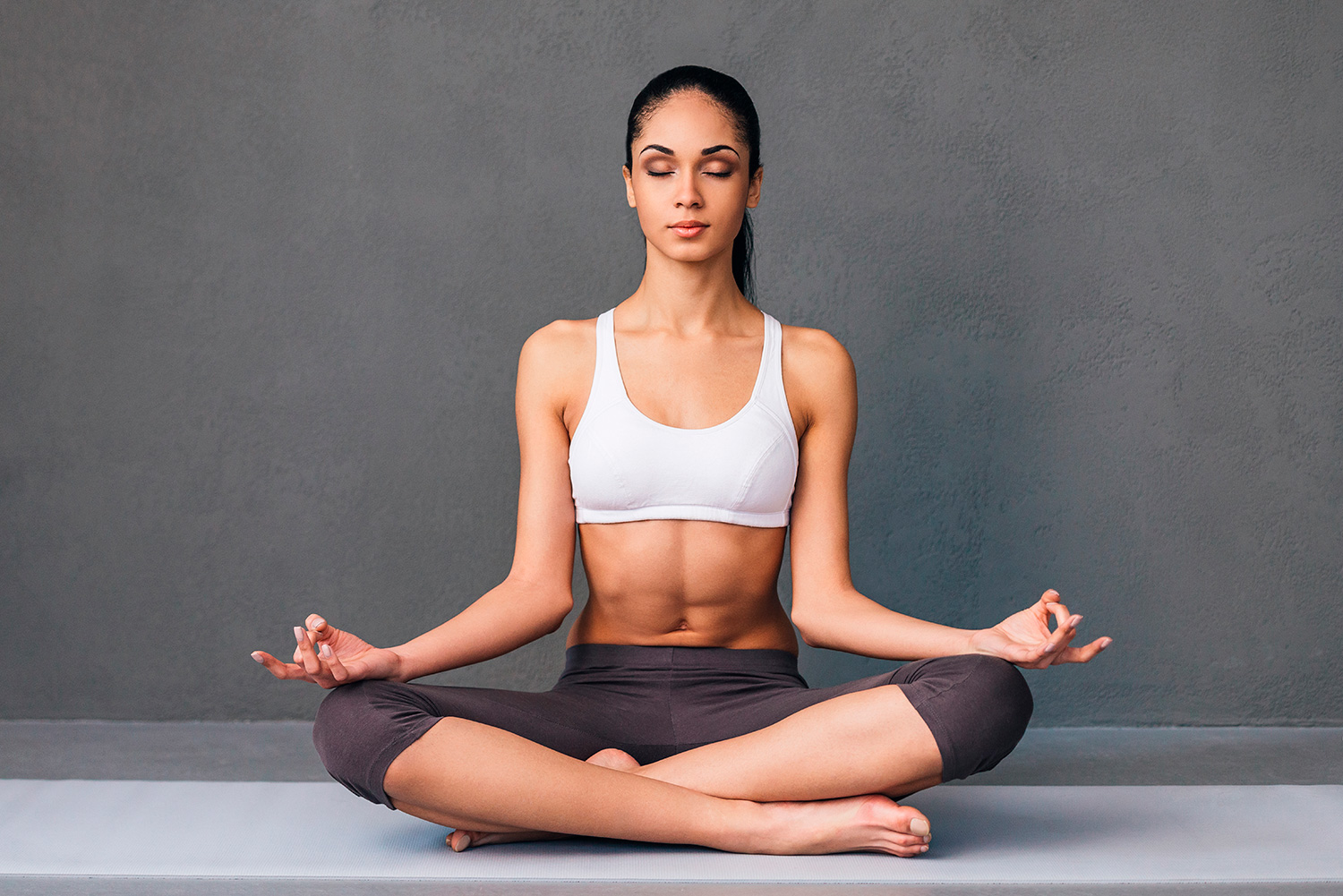
Sit in sukhasana or vajrasana (cross-legged pose). Relax with your right hand on your abdomen. Then, push your midriff inward and exhale air through your nose. Allow the relaxation of abdominal muscles to draw air back into the body, and then repeat the forceful exhale. Continue for 15 to 20 repetitions, and then unwind. Repeat between two and three times.
In this pranayama, more oxygen is delivered to the brain cells. This is advantageous for the nervous system, treats obesity and diabetes, and eliminates impurities from the body.
7. Bhastrika Pranayama (Bellows breath)
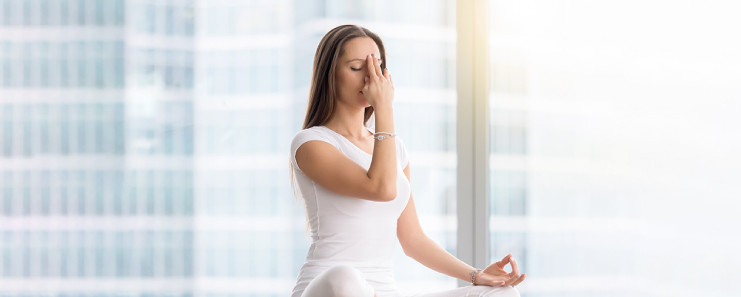
Sit in sukhasana. Make light fists and bring them close to your shoulders while tucking your elbows into your sides. The body should be comfortable and erect. With a deep inhalation, raise the hands and open the fists. Exhaling forcefully, return the hands to the beginning position with the palms once again forming fists facing forward. Twelve to fifteen repetitions over two to three sessions. After each round, relax.
In addition to cleansing the nervous system, this pranayama removes superfluous bile, wind, and phlegm from the body.
8. Nadi Shodhan Pranayama (Alternate Nostril Breathing)

Place the first two digits of your right hand between your eyebrows. With the forefinger, close the right nostril and inhale through the left. Using the ring finger, seal the left nostril and exhale through the right nostril while pausing the inhalation. Close the left nostril and inhale through the right. While pausing the inhalation, press the right nostril and exhale through the left nostril. Perform this movement 10 to 15 times, and then pause.
Nadi Shodhana aids in the treatment of tension, migraine, depression, arthritis, asthma, heart conditions, and occasionally even eye difficulties.
Both Bala and Ujda Chaman convey the message that male pattern baldness should not be a source of insecurity. However, in the majority of cases today, hair loss is attributed to stress and other lifestyle factors.
This suggests that hair loss may be an indicator of a more serious underlying condition. Not only do the mentioned asanas contribute to a healthy body, but they can also effectively aid those experiencing hair loss. Changing one's lifestyle can have a significant impact on the fundamental problems as well.
The techniques taught in the Art of Living Meditation and Breath Workshop are beneficial for coping with high blood pressure, hair loss, and achieving glowing complexion. However, there is so much more. Experience optimal health and inner liberty.
Also read: “Health Is Wealth” Healthy People, Healthy Nation












